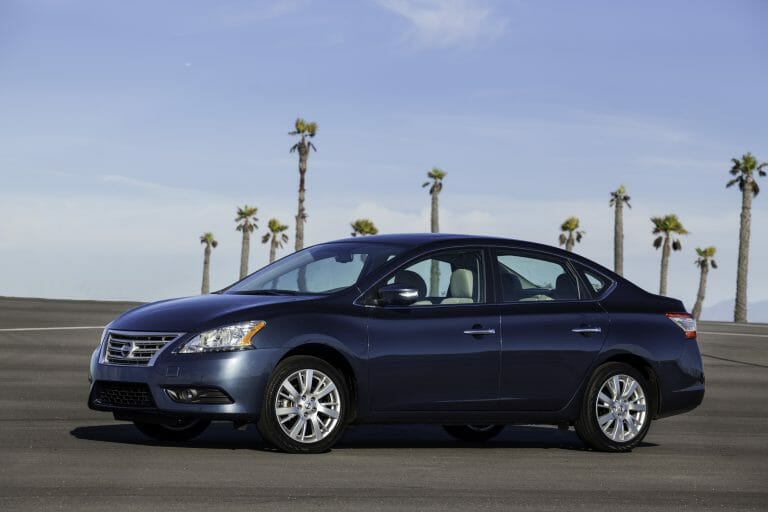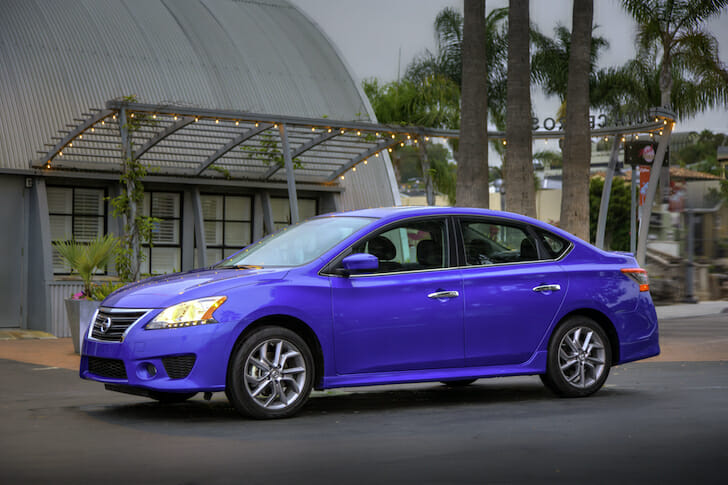The 2015 Nissan Sentra is a fuel-efficient and affordable daily driver. Its sole four-cylinder engine option across all five trim levels serves its purpose and then some with fuel economy ratings approaching 40 mpg.

Key Points
- All five trim options of the 2015 Nissan Sentra use the same 1.8-liter inline four-cylinder dual overhead camshaft engine.
- The engine, known as the MRA8DE, uses advanced variable valve timing technology to achieve a combined fuel economy rating of up to 33 mpg.
- Internal engine components are polished to a mirror finish to minimize friction and allow the engine to run as efficiently as possible.
- A differently tuned variant of the same engine is found in the most efficient trim level, the FE+. It sacrifices a bit of horsepower relative to the other trims to offer enhanced fuel economy.
- No official recalls or investigations pertain to the 2015 Sentra’s engine, and registered complaints about the motor are few.

Modern Technology Like Variable Valve Timing, Direct Injection, and Precise Valve Control Make the 2013 Sentra’s Engine Remarkably Efficient
You’ll find the same four-cylinder engine across all five trim levels of the 2015 Nissan Sentra. It is a 1.8-liter inline four-cylinder engine that uses traditional dual-overhead-camshaft construction known internally as the MRA8DE. In addition, the engine uses aluminum for both the engine block and cylinder head, keeping the weight relatively low.
One of its advanced technical features is the use of continuously variable valve timing on both the exhaust and intake camshaft. This system constantly changes when the engine’s valves open and close based on the engine rpm and throttle position to precisely control the air and fuel mixture. This optimizes the torque output, allowing maximum power when needed and minimizing fuel use when in low-stress driving conditions.
The MRA8DE engine also uses electronically controlled direct injection. This means that the fuel injectors spray fuel directly into the engine’s cylinders rather than into the intake manifold like traditional electronic fuel injection. As a result, the amount of unburned fuel sent into the exhaust system is minimal. This increases fuel efficiency and reduces harmful emissions.
Inside the engine, the crankshaft and camshaft journals are polished to a mirror-like finish to reduce surface friction as much as possible. The less friction an engine has to fight to keep running, the less energy is required to keep the components moving. Therefore, a lower friction environment inside the engine results in more efficient running.
Another step to reduce friction comes in the form of offset cylinders inside the engine block relative to the crankshaft. This allows lesser friction between the pistons and the cylinder walls as they move up and down.
All of these attributes combined make the Sentra’s engine trustworthy and fuel-efficient.

2015 Sentra’s 1.8L Inline Four-cylinder Engine may not be Intended for Speed, but it’s Got Great Fuel Economy Across All Trims
While the engine is not built with speed or power in mind, the relatively light curb weight of the Sentra, around 2,900 pounds, means its limited power is plenty to keep up with traffic.
Obviously, the Sentra is not suited to do any heavy lifting with its limited power output. So, the engine may struggle to get up to speed or up steeper inclines if fully loaded with passengers. Under optimal conditions, it should take the 2015 Sentra an estimated 9.5 seconds to go from zero to 60 miles per hour.
Most trim levels of the 2015 Nissan Sentra have a total power output of 130 horsepower and 128 lb.-ft. of torque. According to the EPA, these models see numbers of up to 27 mpg city and 35 mpg highway when equipped with a six-speed manual transmission. Additionally, models equipped with the Continuously Variable Transmission (CVT) see numbers up to 29 mpg city and 37 mpg highway.
However, the fuel-efficiency-focused FE+ trim level sacrifices a bit of power to enhance fuel economy numbers. Though it is the same engine, it’s tuned differently and produces 124 horsepower and 125 lb.-ft. of torque. The result of this power sacrifice, according to the EPA, is a remarkable 30 mpg city and 38 mpg highway.
2015 Nissan Sentra’s Engine isn’t Exciting, but it Does what it’s Meant to Do Very Well
The MRA8DE engine is not supposed to draw the eye of someone looking for a riveting driving experience. Instead, its sole purpose is to be as fuel-efficient as possible while retaining reliability. While this engine may not be optimal for performance in the traditional sense, it does a great job in performance when it comes to fuel economy.
In terms of reliability, the National Highway Traffic Safety Administration hasn’t reported a single recall or investigation regarding the 2015 Sentra’s engine, and registered complaints about the motor are few.
Overall, the engine under the hood of the 2015 Nissan Sentra is what makes it perfect for budget-minded shoppers searching for a vehicle they can take to work and on road trips without breaking the bank, or the speed limit.
Photos: Nissan
